Goi cuon is a Vietnamese fresh spring roll with shrimp, pork, rice noodles, lettuce, and herbs wrapped in soft rice paper. It’s usually served with a dipping sauce like peanut hoisin or nuoc cham and enjoyed as a healthy, light appetizer or summer snack.
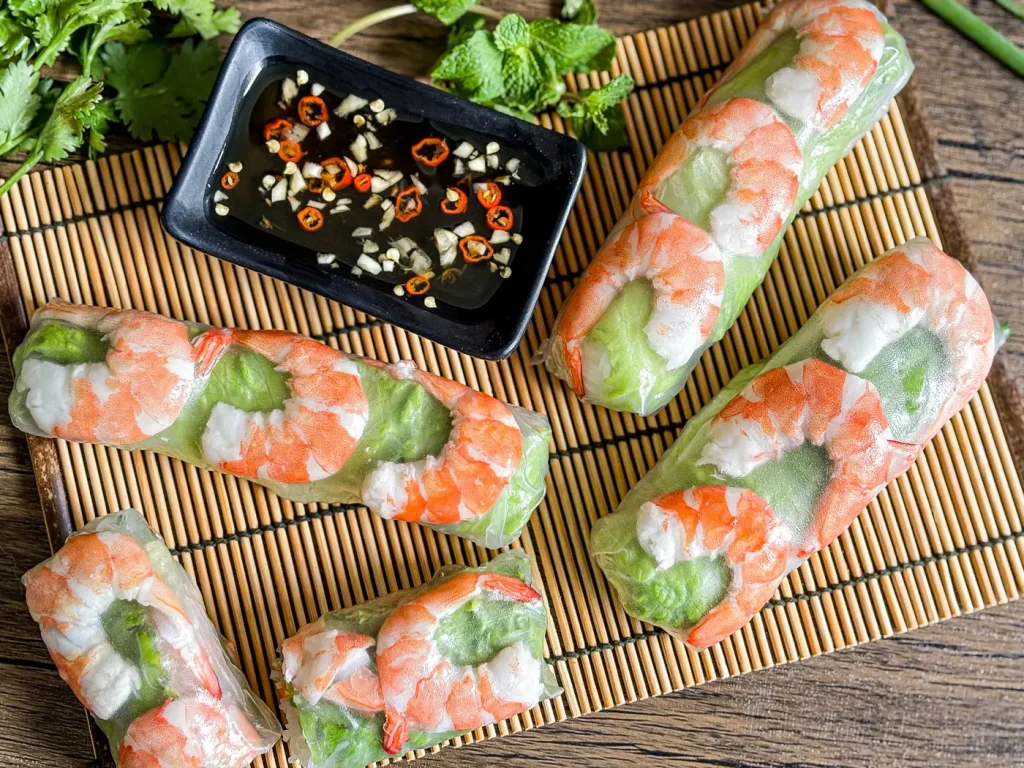
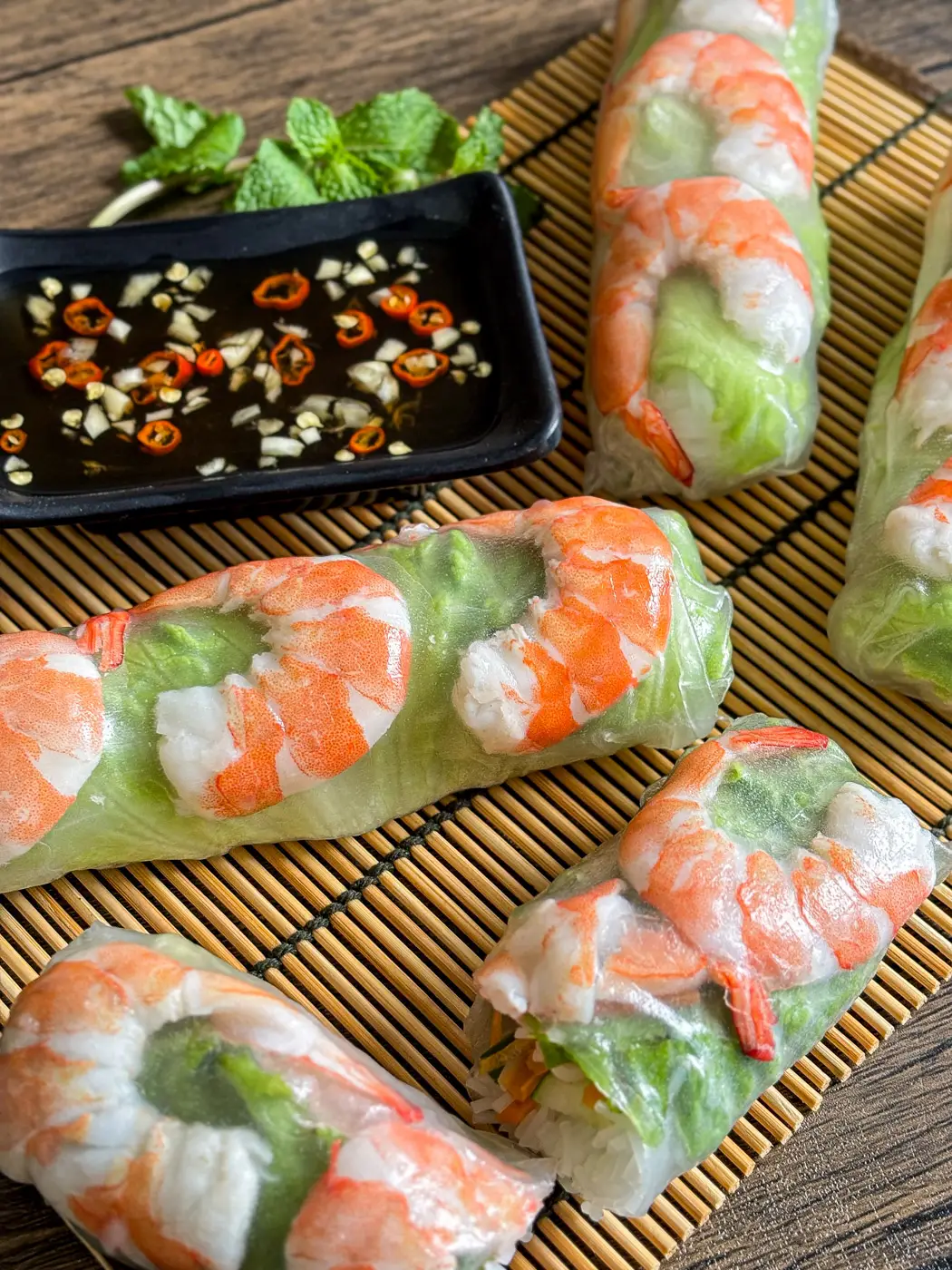
🍚What type of rice paper to use
Vietnamese fresh spring rolls use thin rice paper called bánh tráng, made from rice flour, water, and salt. It softens quickly in water and is used to wrap the fillings. Look for round or square sheets labeled “spring roll wrappers” at Asian grocery stores or Amazon.
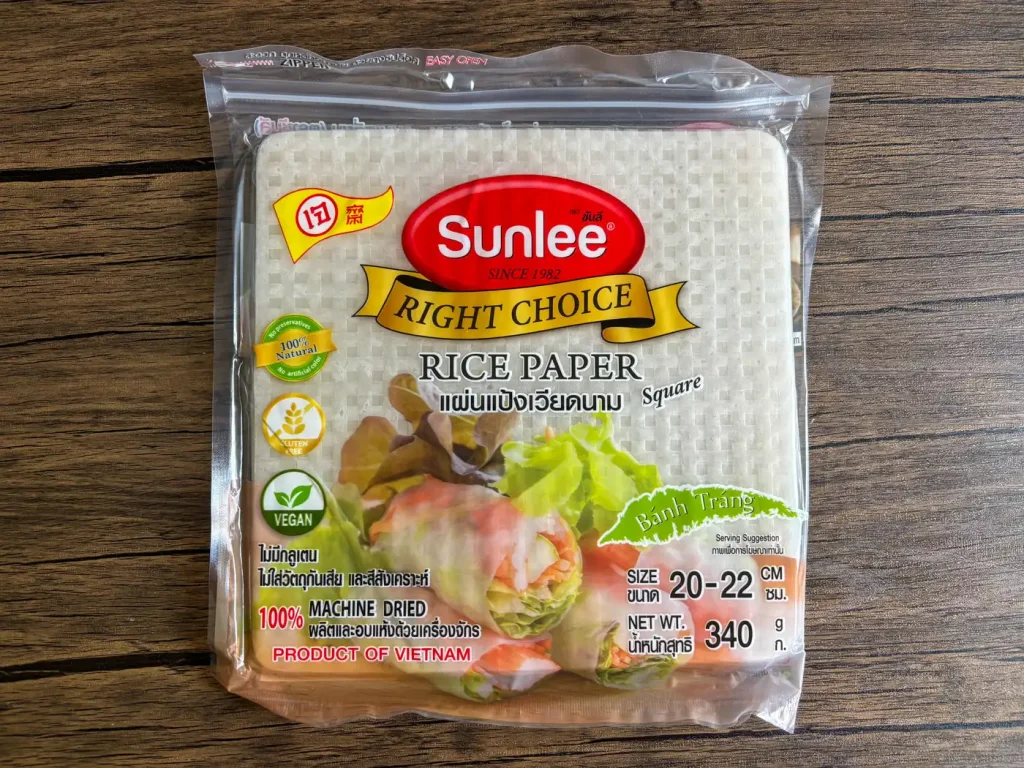
🥣Dipping sauces for goi cuon
Goi cuon is almost always served with a dipping sauce. I like to make at least two because the sauce brings so much flavor, and one just doesn’t feel like enough variety!
- Thai sweet chili garlic sauce
- Nuoc cham (Vietnamese fish sauce dip)
- Vietnamese peanut hoisin sauce
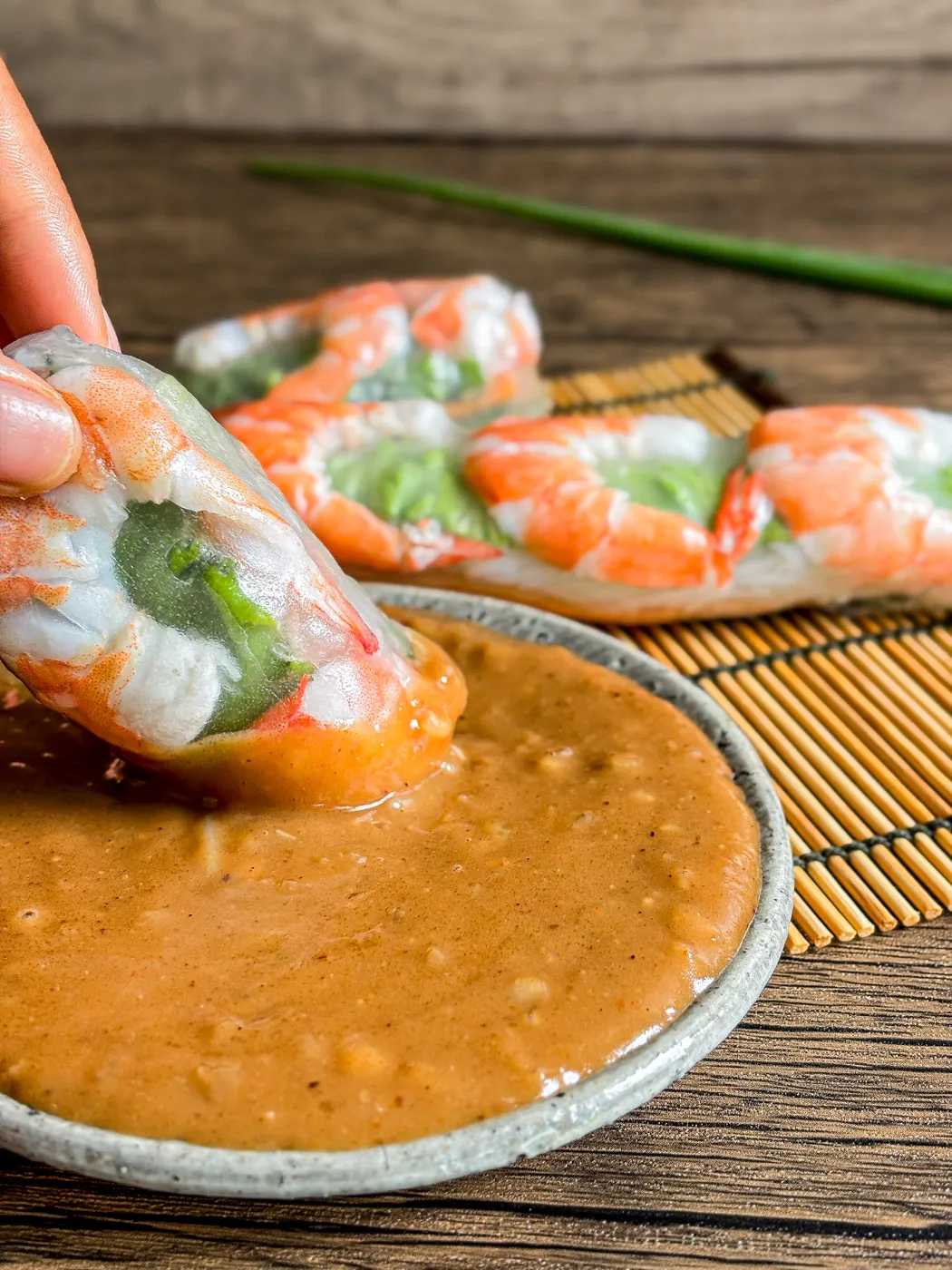
Goi Cuon Recipe (Vietnamese Fresh Spring Rolls)
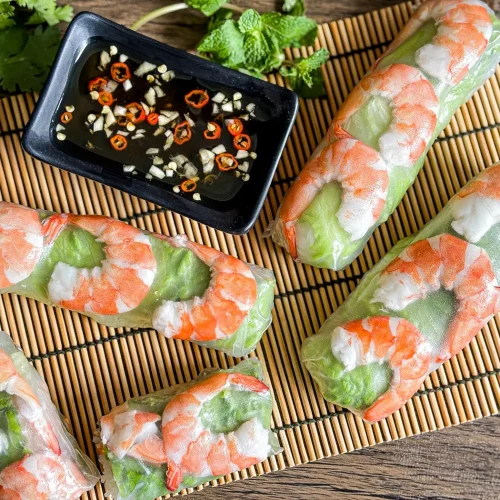
Equipment
- Large shallow bowl or pie dish for dipping the rice paper in warm water
- Clean cutting board or flat surface for rolling the spring rolls
- Sharp knife to slice shrimp, pork belly, and veggies
- Strainer or colander to rinse and drain the noodles
Ingredients
- 1 pack rice paper (bánh tráng)
- warm water for soaking rice paper
- cooked shrimp sliced in half lengthwise (about 2–3 halves per roll)
- cooked pork belly thinly sliced (optional, 1–2 slices per roll)
- mint to taste, (2–3 leaves per roll)
- cilantro to taste (optional, a few sprigs)
- lettuce to taste
- cucumber julienned (about 2–3 thin strips per roll)
- carrot julienned (about 4–5 thin strips per roll)
- cooked rice vermicelli (a little per roll)
Instructions
Prepare the fillings
- Cook the rice vermicelli noodles, then rinse with cold water and drain well.
- Boil or steam the shrimp until fully cooked, then cut them in half lengthwise.
- Slice the cooked pork belly thinly. (if using)
- Wash and dry all herbs and vegetables.
Set up your rolling station
- Fill a large shallow bowl or dish with warm water.
- Place all the fillings (proteins, herbs, veggies, noodles) within reach.
- Use a clean cutting board or a large plate as your rolling surface.
Soften the rice paper
- Dip one sheet of rice paper into the warm water for a few seconds until soft and pliable.
- Lay it flat on your rolling surface.
Add the fillings
- In the lower third of the rice paper, layer a small amount of noodles, herbs, and vegetables of your choice.
- Add slices of pork on top, or a protein of your choice. (optional)
- Roll it up halfway, then place the shrimp halves pink side down near the top (so they show through the wrapper).
Roll it up
- Fold in both sides like an envelope.
- Continue rolling tightly from the bottom to the top until sealed.
Serve
- Serve fresh with dipping sauces like peanut hoisin sauce or nuoc cham.
Video
Notes
- Nutrition information is provided as a courtesy and should be considered approximate.
❓Frequently asked questions
How to keep spring rolls fresh overnight? Wrap each roll tightly in plastic wrap and store them in an airtight container in the fridge. Place a damp paper towel in the container to prevent drying. They’re best enjoyed within 24 hours for optimal texture.
Why are my rice paper rolls tearing? Rice paper tears if it’s too wet or soaked too long. Dip it briefly in warm water (just a few seconds) until it softens but still holds its shape.
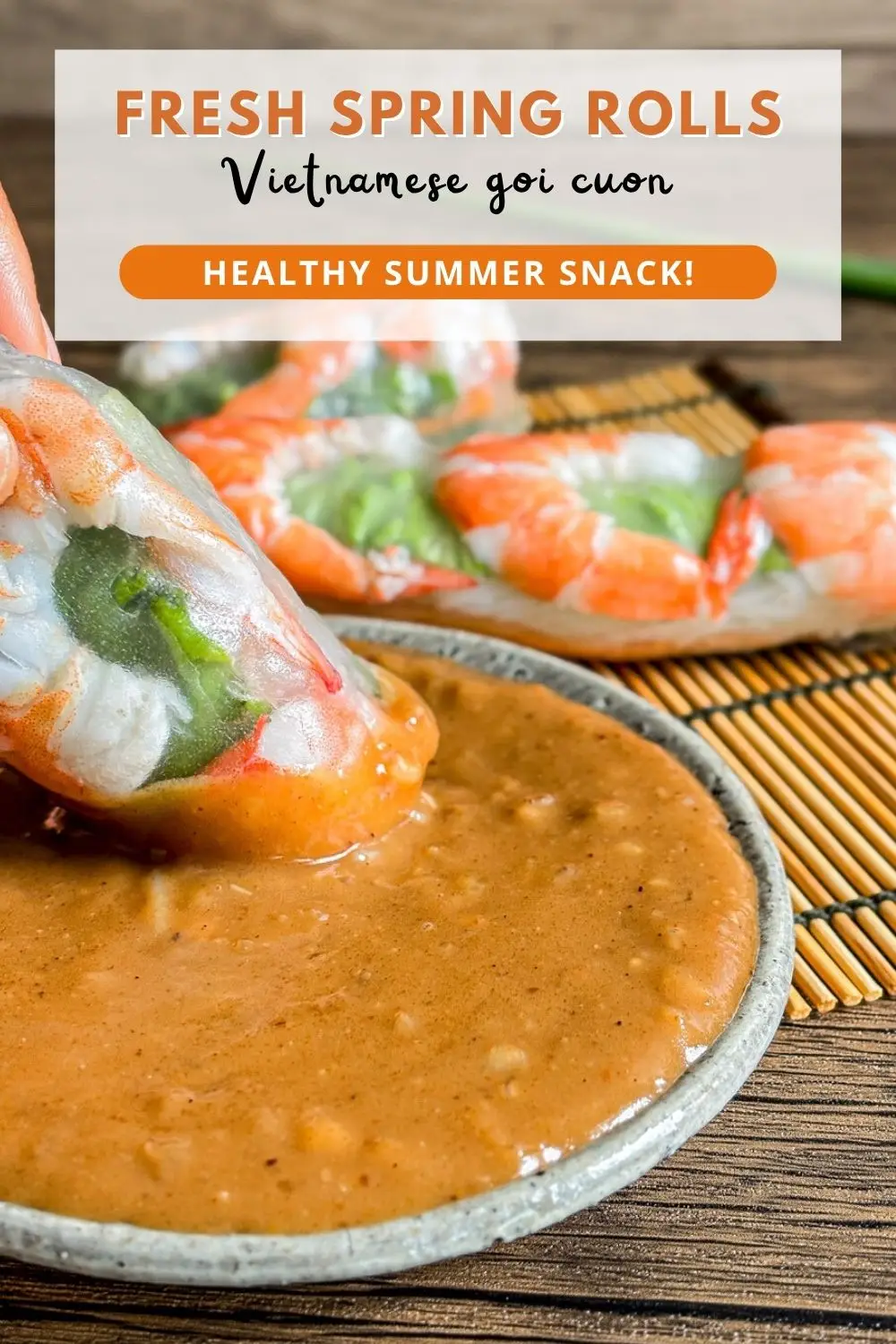

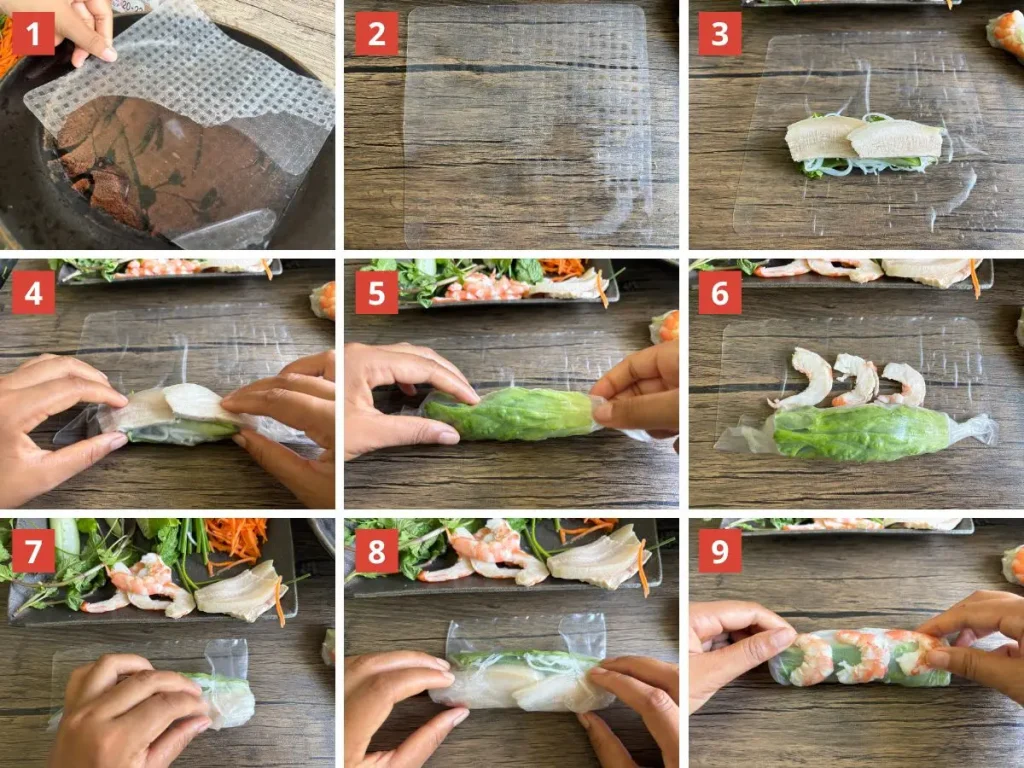
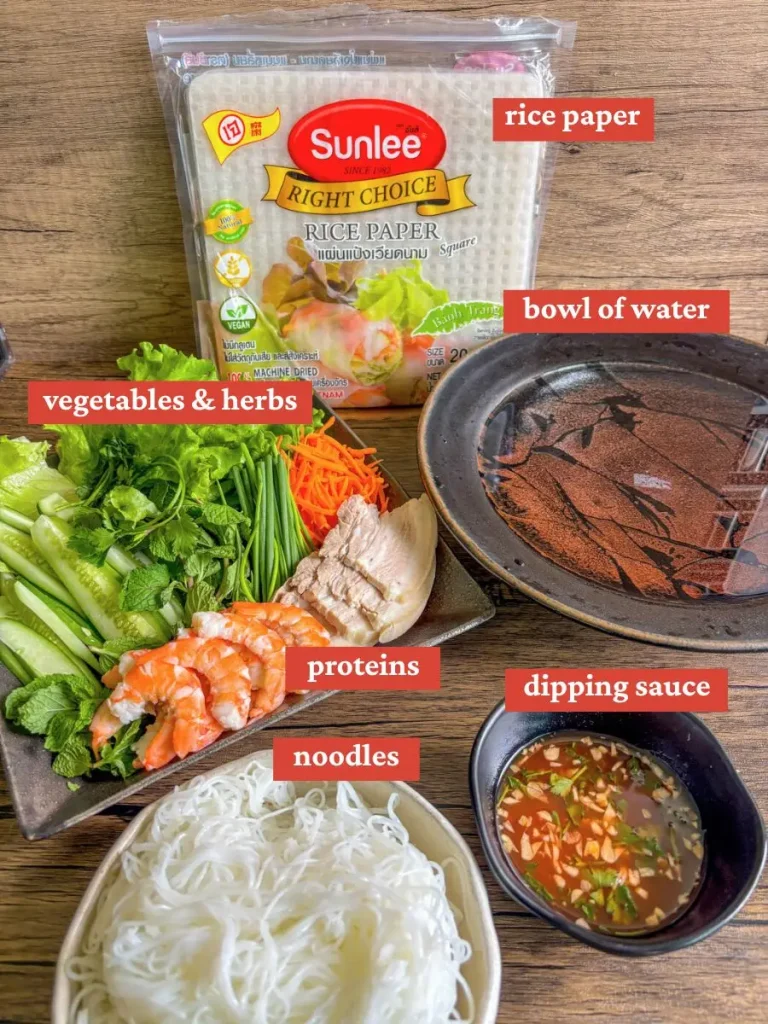
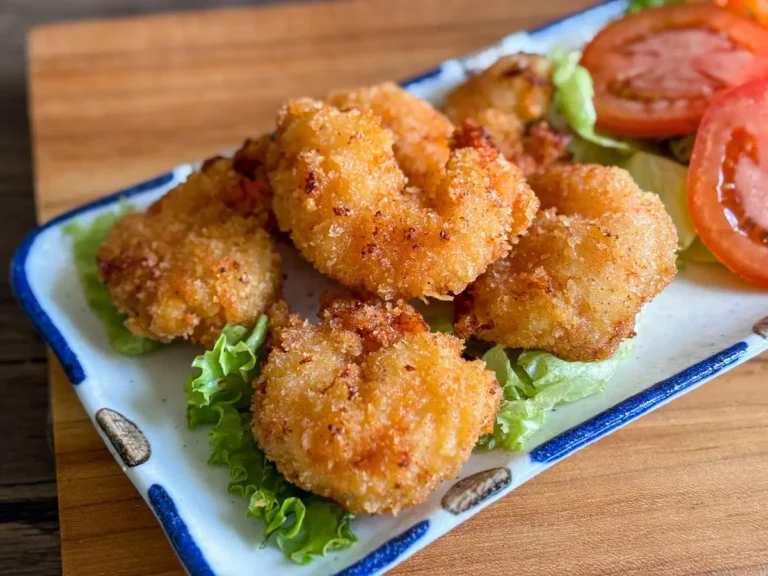
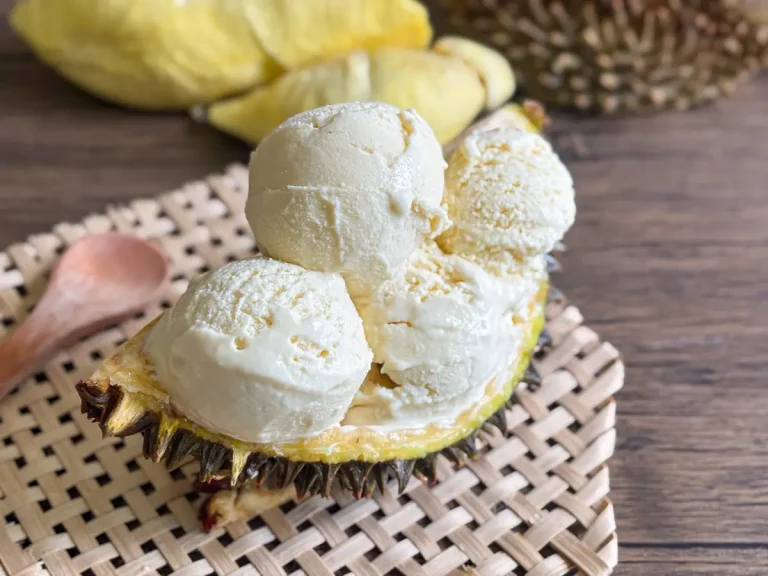
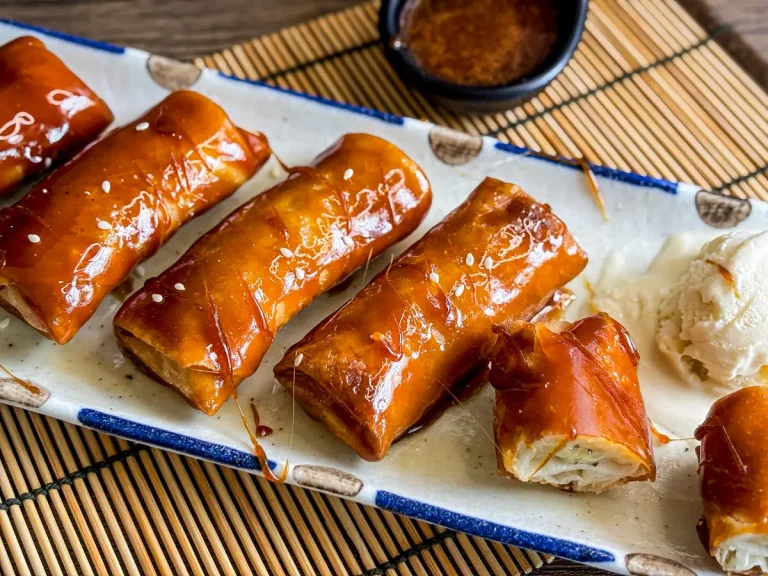
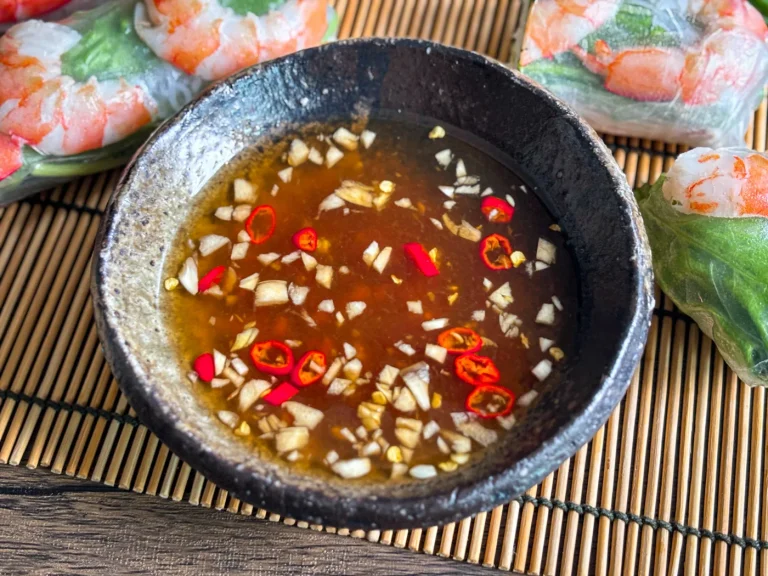
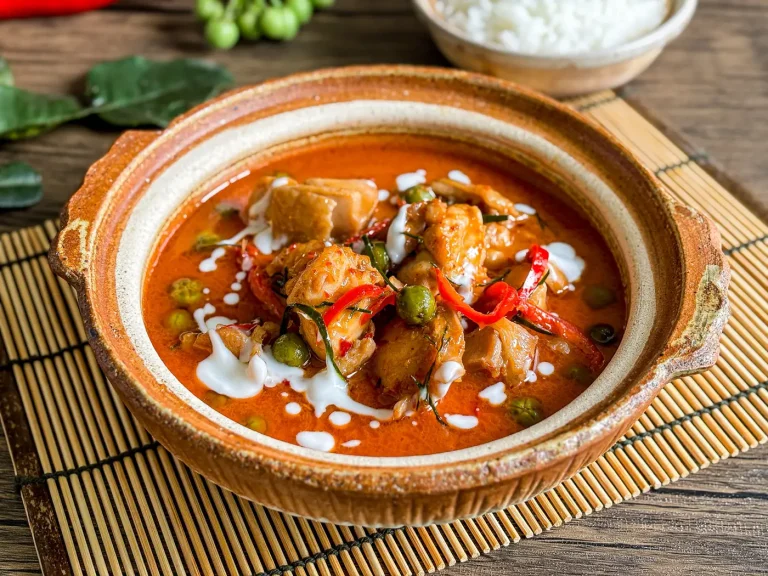
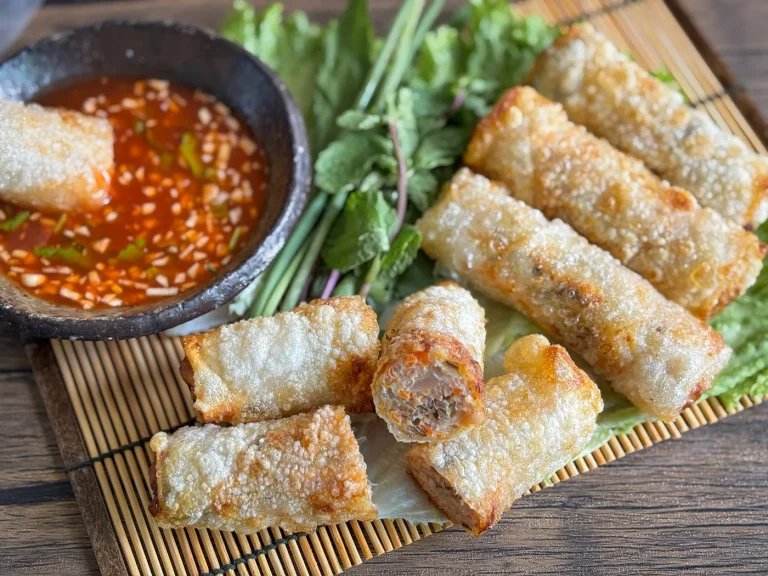
I have made your spring rolls, and they turned out perfect every time. I absolutely love this new blog with the videos. I am a visual person and am so excited to try so many more recipes.
Hey Vicki, thank you so much! I look forward to creating many more video recipes, lots of new things are coming!